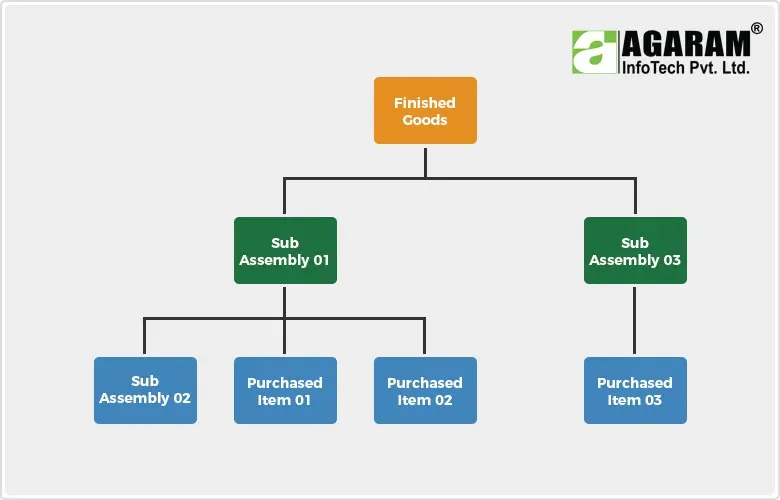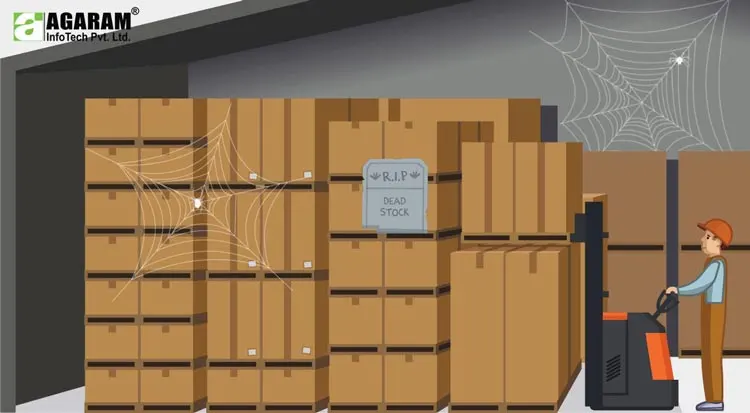Why is BOM not effectively used in SMEs!!!
What is a manufacturing bill of materials (MBOM)?
A manufacturing bill of materials (MBOM) is a highly detailed and comprehensive document which specifies all the raw materials, sub-assemblies, intermediate assemblies, sub-components, parts and the quantities of each needed to manufacture a complete and shippable product. It dictates exactly how a product is made, right down to the very basic details. This also includes part revisions and the quantities required to build an assembly. MBOM mentions the very minutest of details in the production of an item, to the very basic like the specific screws used or the glue used to stick a label. No detail or decision big or small made in each of the important phases of conceptualizing, designing and manufacturing the product is left out of the MBOM.

Why is the manufacturing BOM important?
Now that we have explored on the contents of BOM, let’s get to the question of “Whether it is important?. Every manufacturing industry big or small will function with these major objectives/ goals in sight:
Adequate materials are available for production and products are available at the required time for delivery.
The inventory is maintained to have the lowest possible material quantity (to ensure that there are no hitches in production), and the required product levels.
The MBOM addresses each of these objectives in the best way possible:
Provides Cross-training - A MBOM contains all the specifications required for the production of an item, the raw materials used, the supplier specification, the process details, process routing details; every minutest of information is mentioned in the BOM. This ensures that the production doesn’t come to a standstill if a person in-charge of a certain production activity is unable for a while. Someone else can access the BOM and will be able to carry out the production satisfactorily by following the detailed instructions specified in it.
Ensures Manufacturing Compliance - MBOM contains a detailed set of instructions for manufacturing. This makes compliance with standards easier as all instructions are easily available at a click of a button. The MBOM also ensures transparency and reproducibility, which is the key for quality and compliance.
Template for Standardization, Accuracy and Quality Assurance - With manufacturing becoming increasingly distributed, MBOM has assumed a bigger role. It becomes the primary reference file for product data, and transfers product information from OEM to EMS provider and from the EMS to its vendors and suppliers. Now with outsourcing expands the number of companies involved in the manufacturing process, the need for accuracy is more critical than ever. BOM ensures compliance and provides reference for standards at each stage.
Provides Vision and motivation - A MBOM clearly sketches the journey of a product from concept to creation. Every detail w.r.t product, be it packaging or ordering, can be found in the MBOM. So when there is discussion on a new product or a new supplier for a component, BOM is available to validate if the new decision will fit in with the current production demands and timelines. This way MBOM ensures that possible new changes enhances the company’s manufacturing and business goals rather than compromise them.
Enables Better management decision - Since the MBOM provides extensive information about all the components and steps in the manufacturing process, the operations team can make appropriate trade-offs throughout the life of a product and ensure that the organization delivers product efficiently and cost-effectively into the customer’s hand.
We don’t use structured BOM. Are we at Loss?
If you are pondering on these lines, the answer to your question is “Definitely yes”. The dangers facing a business when a structured Bill of Materials is not maintained can be many extremely costly, both in terms of wastage of time, and valuable resources like – labour, materials and not to mention the most important one capital. However if you are using a framework that defines the materials and process for production but it is unclear or has missing pieces of information, it would spell disaster down the line. Consider the situation where one component is left un-sourced, or a raw material required for a process is unavailable, the entire manufacturing machinery could grind to a halt. When this happens, the time and money spent on first tracking down the cause of the delay, then sourcing the component or procuring the raw material and then restarting production would cost your business a bomb. Hence inaccurate BOMs can lead to a wide range of issues which include inferior material planning, material shortages, inaccurate product costing and elevated production costs, delays in shipments, lost sales, obsolescence and increased risk of product liability as a result of malfunctioning product.
Now that I need a BOM, How should I Manage it?
With so many obvious reason why a detailed BOM is critical to the successful management of the resources, we cannot help but think “Why do small and medium size enterprises not use BOM!!”. For it makes possible the dream of manufacturing product cost-effectively. Now that we have established the vital role an accurate and detailed BOM plays, our next question will be “What tool to choose to maintain the BOM?”. Are you thinking Excel? It’s time to reconsider. Many small and mid-size enterprises (SMEs) initially use Excel spreadsheets to maintain their product bill of materials (BOM). This may still work if the No. of products is very few however when they release more products, grow internally or add more manufacturing and outsourcing partners, managing an Excel bill of materials becomes much difficult or to say nearly impossible.
Common problems with an Excel bill of materials
Identification of latest revision - The most challenging task while maintain an Excel bill of materials would be the identification of the latest revision of BOM and whether that revision is correct. In an organization finding out who has which version of the BOM becomes a question that can’t be answered.
Common Components amongst Products - Many a times in manufacturing scenarios two or more products share components. When there is higher inventory requirement of certain material, bulk purchasing for it can be effected which is cost-effective for the company. But searching through an Excel bill of material to identify common part numbers is cumbersome and consumes a lot of time all the more if a component has been assigned different part numbers in different places.
Unstructured Data - Excel, is basically unstructured data, it doesn't care about relationships from one cell to another, and that creates quite a few problems for authoring BOMs quickly and accurately. Some of the issues include:
- Large amounts of repetitive data entry
- No methodology for validation or protection for part numbers
- No efficient method to delete, insert, or re-arrange BOM lines
- When product complexity increases expensive errors will occur.
Inefficient resource usage - Employees end up spending hours searching for the right BOM spreadsheets on servers, in their email archive or desktops. They expend their valuable time looking over endless rows and columns of data, trying to make sure everything matches up correctly. The time wasted on these tedious tasks is hard to track, but the true cost of it is paid in the form of product specification flaws in shop floor or worst at the customer’s hands. This can impact your organization’s reputation as well.
Stuck with Excel BOM, How do I Turn around?
The answer is simple - respect the BOM! - The bill of materials is the core of any Manufacturing industry. Without a good MBOM, your product is either slowly built, or incorrectly, or in the worst scenario not made at all. Several well-known brands have been deeply tarnished when their response to design issues did not meet the expectations of their customers. Your BOM management solution must be quite robust. Ensure that you use a tool that truly models BOM structure. A reliable one offers these proven advantages :
It empowers the BOM as a data framework. So that it can serve as the single product data source for the entire organization in a single location.
It provides a platform that the engineers and manufacturers can utilize to manage bill of materials and related product data. In maintains the bill of materials in a centralized location making it easy to keep product data up-to-date.
It provides a platform that the engineers and manufacturers can utilize to manage bill of materials and related product data. In maintains the bill of materials in a centralized location making it easy to keep product data up-to-date.
It enables easy sharing of BOM with suppliers and contract manufacturers; so partners have access to the product data they need to build the right product with the right parts.
An integrated Manufacturing Solution that combines these three elements will improve the efficiency of the bill of materials for individual users and overall data sharing across all levels of the supply chain, How? Let’s discuss in our following blog.

 Dormitory-Management-System
Dormitory-Management-System


